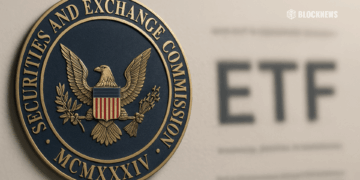- Blackhole is Avalanche’s fastest-growing DEX, reaching billions in trading volume and over $250M TVL within weeks.
- Powered by the BLACK token, it uses a dual veNFT system (Singularity & Supermassive) for governance, liquidity rewards, and sustainable tokenomics.
- Positioned as a liquidity hub for DeFi, NFTs, AI, and GameFi, Blackhole aims to be a long-term income-generating ecosystem, not just a speculative token.
Blackhole, the fastest-growing decentralized exchange on Avalanche, has transformed from a quiet launch into the network’s largest liquidity hub in only a matter of weeks. With billions in trading volume, a total value locked once peaking at over $250 million, and a community-focused token model, Blackhole has positioned itself as one of the most ambitious DEX projects in the market today. So, let us take a closer look at what makes Blackhole such a force in DeFi.
What Is Blackhole?
Blackhole is a next-generation decentralized exchange built on the Avalanche blockchain. At its core, it functions as a liquidity hub designed to support both established and emerging blockchain projects. Unlike traditional DEXs that often follow a simple swap-and-earn structure, Blackhole integrates multiple AMM models, an innovative dual vote escrow NFT (veNFT) tokenomics system, and a governance-first approach that empowers its community of holders.
Its mission is not just to provide trading services, but to serve as the backbone of liquidity for Web3 applications spanning DeFi, NFTs, gaming, and even AI-driven projects. This positions Blackhole as more than a marketplace—it is an infrastructure layer for the next wave of decentralized adoption.
How Does It Work?
The engine of Blackhole lies in its vote-escrow model, an upgraded version of the ve(3,3) design. Holders lock their $BLACK tokens into veNFTs, gaining voting power and access to protocol revenues. These veNFTs come in two forms:
- Singularity veNFTs – Created by locking tokens for a set period, from one week up to four years. Voting power increases with longer lock times.
- Supermassive veNFTs – Generated by permanently burning $BLACK tokens. These provide non-decaying voting power, enhanced rebasing, and boosted influence in governance.
Each week, known as an epoch, holders vote on which liquidity pools should receive emissions. Liquidity providers in those pools then earn rewards based on both emissions and trading fees. This closed-loop structure ensures that liquidity gravitates toward the pools that matter most to the ecosystem, while holders receive steady fee distributions.
What Problems Does It Solve?
Blackhole targets several persistent issues in the DeFi landscape. First, it tackles liquidity fragmentation by offering a centralized hub for GameFi, AI, and DeFi projects to pool assets and attract users. Instead of siloed liquidity across dozens of niche platforms, Blackhole aggregates and amplifies it.
Second, it eliminates the trust problem that plagues token launches. Most protocols rely on vesting schedules and promises from founding teams not to dump their tokens. Blackhole bypasses this entirely by burning team and foundation tokens to mint Supermassive veNFTs. These tokens are permanently removed from circulation, ensuring zero sell pressure and full alignment with the protocol’s long-term health.
Third, it addresses governance inefficiencies. Traditional models suffer from decaying voting power and limited flexibility. Blackhole’s dual veNFT system introduces permanent voting power, boosted rewards, and dynamic emissions control, giving users real influence over the protocol’s economic policy.
Utility and Offerings
Blackhole’s utility is embedded in its architecture. Every feature serves a purpose, and every mechanism is designed to drive value back to the community. Key utility and offerings include:
Genesis Pools
These are pre-TGE liquidity creation mechanisms that allow projects and users to co-fund pools before a token launch. Projects contribute their native tokens, while users provide stable assets. In return, contributors receive auto-staked LP tokens that earn yield from day one. This model ensures deep liquidity and immediate engagement.
Dual veNFT System
Singularity veNFTs offer flexible governance participation with time-locked BLACK tokens. Supermassive veNFTs require permanent burns, granting holders non-decaying voting power, a 10 percent voting boost, and a 10 percent rebase rate bonus. This dual system rewards both short-term participants and long-term believers, creating a balanced governance ecosystem.
Improved ve(3,3) Tokenomics
Blackhole refines the ve(3,3) model by introducing dynamic emissions and a deflationary supply. Emissions are distributed across four phases: Singularity, Event Horizon, Accretion Disk, and Hawking Radiation. Each phase adjusts token output to balance growth and sustainability. In the final phase, Supermassive veNFT holders vote to increase, decrease, or maintain emissions, giving them direct control over inflation.
AMM Suite
Blackhole integrates multiple AMM types, including concentrated liquidity AMMs for efficiency, UniV2-style AMMs for simplicity, and stablecoin AMMs for low-slippage swaps. Through Algebra Integral, partners can further customize these AMMs with plugins, allowing highly tailored liquidity strategies.
Revenue Distribution
All trading fees are funneled back to veNFT holders. This transforms $BLACK from a speculative token into a genuine income-generating asset, tying its value directly to the success of the platform.
Ecosystem Highlights
Blackhole’s growth has been nothing short of explosive. Within weeks of launch, it surpassed competitors like HyperSwap and Balancer on Avalanche, claiming the top spot as the network’s largest DEX. Its total value locked peaked at $255 million, while its 30-day trading volume exceeded $5.6 billion. Annualized fees and revenues have reached over $53 million, nearly all of which are redistributed to holders. This dynamic creates a striking situation where protocol revenue already surpasses the market capitalization of $BLACK.
Community metrics show strength as well, with liquidity heavily concentrated in major pairs such as USDC, USDT, WAVAX, and BTC.b. The protocol has also positioned itself as a foundational hub for Avalanche’s SuperVerse, integrating DeFi with gaming and NFTs.
Moreover, institutional interest is growing, and notable figures like Alex Becker have weighed in. Becker, a co-founder of the project, has emphasized that Blackhole is not a speculative asset but a yield-generating business. He has repeatedly stated that he earns from platform fees, not token sales, and that BLACK holders are currently earning double-digit APYs simply by participating in governance and liquidity provisioning.
All in all, this shift in narrative—away from speculation and toward income generation—has begun to resonate with long-term participants seeking sustainable value capture.
Roadmap and Plans Ahead
Blackhole’s roadmap is structured around its emissions schedule and ecosystem expansion. The protocol is currently in Phase 2, the Accretion Disk, where emissions decrease by 1 percent per epoch to manage inflation. This phase will continue until epoch 66, after which the Hawking Radiation phase begins. In this final phase, Supermassive veNFT holders vote to adjust emissions dynamically, giving the community direct control over the protocol’s monetary policy.
Future plans include staking support, merchant payment tools, NFT integrations, and expanded liquidity infrastructure for AI and GameFi projects. The team is also exploring cross-chain deployments and DAO tooling to further decentralize governance and broaden adoption.
Final Thoughts
In conclusion, Blackhole has rapidly established itself as a powerhouse within DeFi by combining deep liquidity, sustainable tokenomics, and a community-first framework that puts value back into the hands of its users. With a clear roadmap, expanding ecosystem adoption, and governance designed to reward long-term holders, it continues to set a new standard for decentralized exchanges. So, as the platform grows and extends its reach across gaming, AI, and DeFi projects, it will be interesting to see how Blackhole shapes the future of income-generating, community-driven liquidity.














